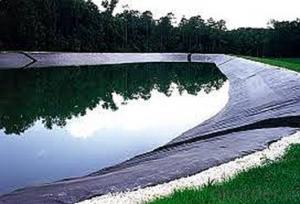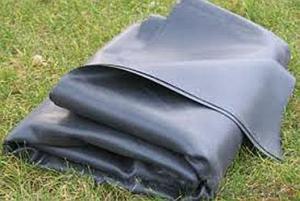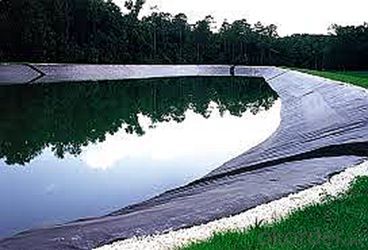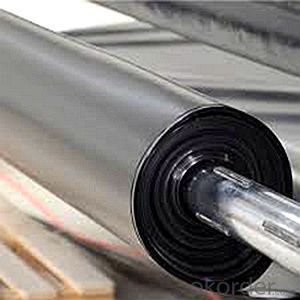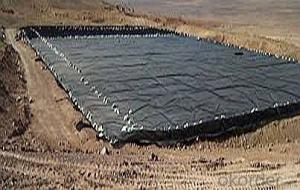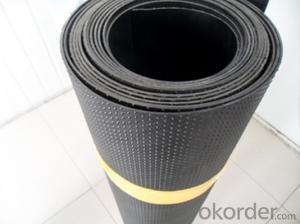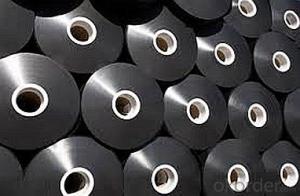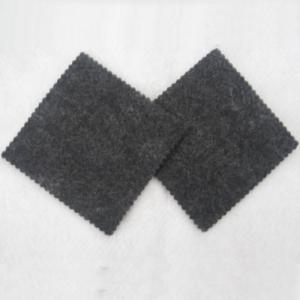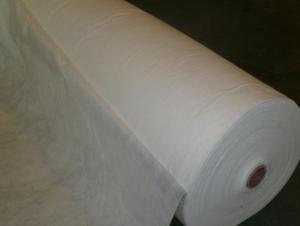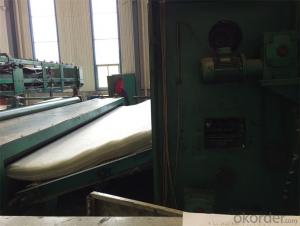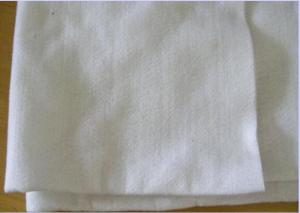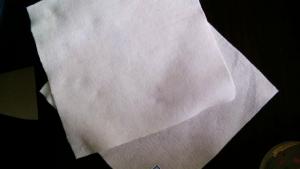Geotextile Roll Width 2024 Geomembrane for Radioactive or Hazardous Waste Liquid
- Loading Port:
- China main port
- Payment Terms:
- TT OR LC
- Min Order Qty:
- 1000 m²
- Supply Capability:
- 1000000 m²/month
OKorder Service Pledge
OKorder Financial Service
You Might Also Like
Specification
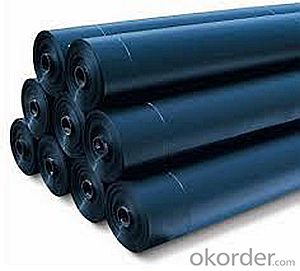
Type:
Geomembranes
Place of Origin:
Shandong, China (Mainland)
Brand Name:
CMAX
Model Number:
geomembrane
Material:
EVA, HDPE, LDPE, LLDPE, PVC
Application
1.Used in PONDS LINER (artificial lakes, garden,ponds, the lining of tank in golf course,slope protection, etc)
2.Used in dam (such as impervious, stop water loss, and reinforcing of lakes, and the impervious, slope protection, etc.)
3.Used in Environmental protection, energy/mining
(such as landfill, waste water treatment, toxic and harmful chemicals disposal sites, storage of dangerous goods, industrial waste, construction and demolition waste, etc.)
Our Service
Quality assurance
1.On a regular basis or as per your request,we entrust national testing agencies to conduct quality inspections
2. Strictly in accordance with the ISO9001-2008 international quality system standard,we monitor and manage the whole process throughout production,quality testing,and measurement to ensure product quality
3. For quality-related construction delay or substandard construction(except for damage or losses due to customer’s responsibility or irresistible natural disasters),we have refunding,replacement,and repair services.We will respond to customers’ feedbacks on quality issues within 24 hours.
Packaging & Shipping
Packing: PLASTIC FILM INSIDE, AND WOVEN BAG OUTSIDE
Shipping: About 15 days after receipt the deposit
FAQ:
Q: What kind of payments does jenor support?
A: T/T, L/C, Cash are accepted.
Q: Do you charge for the samples?
A: Accordeing to our company policy, the samples are free, we only charge the freight fee. And we will return the freight fee during the next order.
Q: Can you produce according to customers' design?
A: Sure, we are professional manufacturer, OEM and ODM are both welcome.
Q: Do you have other products?
A: Yes, please check the pictures:
- Q: What are the specifications for geotextiles used in erosion control mats?
- The specifications for geotextiles used in erosion control mats typically include properties such as high tensile strength, durability, UV resistance, and permeability to water. These geotextiles are often made from synthetic materials like polypropylene or polyester, with specific weight and thickness requirements to ensure effective erosion control. Additionally, they may need to meet certain industry standards or certifications for quality assurance.
- Q: How do geotextiles help with erosion control in slope protection projects?
- Geotextiles help with erosion control in slope protection projects by providing a physical barrier that prevents soil erosion. They are placed on the surface of slopes to stabilize the soil, allowing vegetation to grow and establish roots. This helps in reducing the impact of rainfall and surface flow, minimizing sediment runoff, and maintaining the integrity of the slope. Additionally, geotextiles enhance the overall stability of the slope by distributing loads and reinforcing the soil, thereby reducing the risk of slope failure.
- Q: Can geotextiles be used in geothermal energy projects?
- Yes, geotextiles can be used in geothermal energy projects. Geotextiles are often used as a separation and filtration layer in geothermal systems to prevent the mixing of different types of soils and to enhance drainage. They can also be employed as a reinforcement material to increase the stability of the ground during the installation of geothermal wells.
- Q: Are geotextiles suitable for use in erosion control socks?
- Yes, geotextiles are suitable for use in erosion control socks. Geotextiles provide effective erosion control by preventing soil erosion and promoting sediment retention. They are designed to withstand water flow while allowing water infiltration, making them an ideal choice for erosion control socks.
- Q: What are the different geotextile installation techniques for roadways?
- There are several different geotextile installation techniques for roadways, including the overlay method, the trench method, and the sandwich method. - The overlay method involves placing the geotextile directly on top of the existing soil or subgrade before adding the new road material, such as asphalt or concrete. This technique helps to separate the soil layers and prevent the mixing of materials, providing stability and reducing the risk of road failure. - The trench method involves excavating a trench along the road alignment and placing the geotextile in the trench before backfilling it with soil or aggregate. This technique is commonly used for drainage applications, as the geotextile acts as a filter to prevent fine particles from clogging the drainage system, while allowing water to flow through. - The sandwich method is a combination of the overlay and trench methods. It involves placing a layer of geotextile between the existing soil and the new road material, as well as placing another layer of geotextile on top of the new road material. This technique provides additional reinforcement and separation, enhancing the overall performance and durability of the roadway. Overall, the choice of geotextile installation technique depends on the specific requirements and conditions of the road project, such as soil type, traffic load, and drainage needs.
- Q: 200g / m2 geotextile how to enter the inspection test
- (Including: wide strip tensile test, trapezoidal tear strength test, CBR bursting strength test, puncture, mechanical properties, including mechanical properties (including: gross weight per unit area, amplitude measurement, thickness measurement); mechanical properties (including: (Including vertical penetration test (constant head method), hydrostatic pressure test, effective pore size test (dry sieve method), clogging test, etc.). Related testing standards: 1. Short wire acupuncture geotextile with reference to GB / T-1998.2. Filament acupuncture geotextile with reference to GB / T-2008.3. Filament woven geotextile GB / T-2008.4 Welded film woven geotextile with reference to GB / T-1998
- Q: Can geotextiles be used in stormwater management systems?
- Yes, geotextiles can be used in stormwater management systems. Geotextiles are often used as a filtration and separation layer in stormwater systems to prevent soil erosion, filter out sediment and pollutants, and improve water quality. They can be installed in stormwater basins, retention ponds, and permeable pavement systems to enhance their effectiveness in managing stormwater runoff.
- Q: Are geotextiles suitable for use in geocell retaining walls?
- Yes, geotextiles are suitable for use in geocell retaining walls. Geotextiles help in enhancing the structural stability of the geocell walls by providing soil confinement, filtration, and erosion control. They prevent soil migration, improve drainage, and increase load-bearing capacity, making geotextiles an ideal choice for reinforcing geocell retaining walls.
- Q: Geotextile puncture test standard
- Staple stitch filament piercing filament woven weaving
- Q: How are geotextiles used in agricultural applications?
- Geotextiles are used in agricultural applications to stabilize soil, control erosion, and promote proper drainage. They are typically placed beneath soil or gravel surfaces to prevent weed growth and maintain soil structure. Additionally, geotextiles help retain moisture, improve filtration, and mitigate nutrient leaching.
Send your message to us
Geotextile Roll Width 2024 Geomembrane for Radioactive or Hazardous Waste Liquid
- Loading Port:
- China main port
- Payment Terms:
- TT OR LC
- Min Order Qty:
- 1000 m²
- Supply Capability:
- 1000000 m²/month
OKorder Service Pledge
OKorder Financial Service
Similar products
Hot products
Hot Searches
Related keywords

